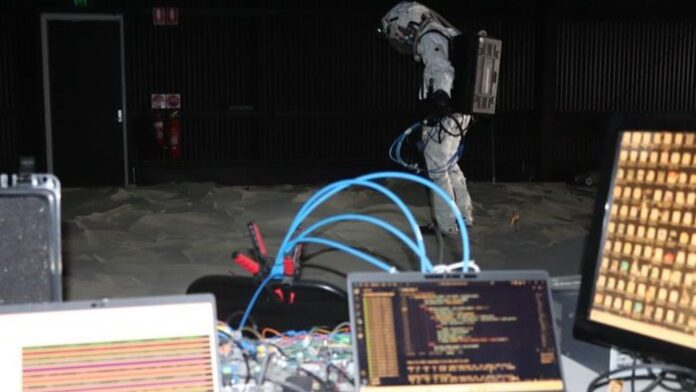Wearing a spacesuit on the moon or Mars will always feel like exercising against stiff resistance. That’s because the pressurization that keeps astronauts alive and breathing also makes every movement a chore. But what if an extra layer of “muscle” could help?
A team from the University of Bristol has developed a prototype “exosuit” designed to be worn under a traditional spacesuit, promising easier movement and reduced fatigue for future lunar or Martian explorers. The suit, crafted by Emanuele Pulvirenti himself, features artificial muscles woven into two layers: an outer nylon layer and an inner thermoplastic layer for airtightness. Kevlar provides extra strength in the knee straps and waistband.
This isn’t the first attempt at building a spacesuit helper. NASA developed the “Iron Man”-esque X1 Robotic Exoskeleton over a decade ago, while Sarcos created the XOS exoskeleton around 2007 with funding from the Defense Advanced Research Projects Agency (DARPA). While earlier designs have focused on raw strength and power, Pulvirenti drew inspiration from his grandmother’s tailoring skills and worked with colleagues at Bristol’s Vivo Hub to focus on flexibility and lightness.
To test its potential in real-world conditions, the exosuit went on a “moon mission” of sorts last month. Four analog astronauts trained for two weeks at CRATER (Covered Regolith Analogue Terrain for Experimental Research) – Australia’s largest moon simulation facility. They put the suit through rigorous trials involving walking, climbing, and carrying equipment in an environment that replicates the challenges of lunar terrain and lighting conditions.
This analog mission, however, wasn’t just a local affair. CRATER was integrated into “The World’s Biggest Analog,” a global collaboration involving over 200 scientists from 25 countries linked to a mission control center in Austria.
Researchers are pushing for more rigorous standards in analog missions like this one, emphasizing formalized training, publication requirements, and broader scientific research than ever before. This focus on professionalism aims to elevate the value of these simulations as we inch closer to actual human lunar landings.
The suit is still in its early stages of development. Pulvirenti sees it potentially going through further testing on the International Space Station before its decommissioning in late 2030. But his ambitions extend beyond space exploration. He envisions a version adaptable for everyday use, helping people with mobility challenges and those undergoing physical rehabilitation by switching between assistance and resistance modes as needed.














































